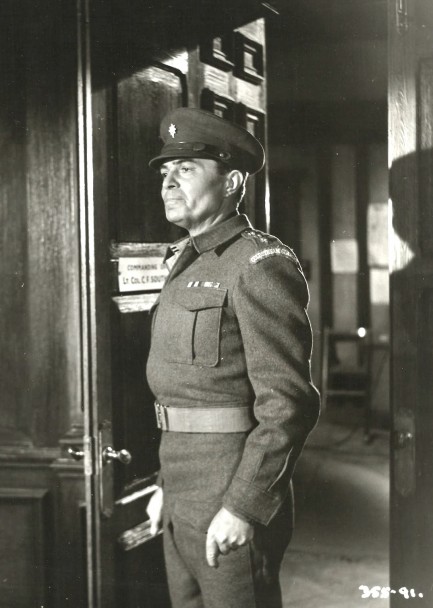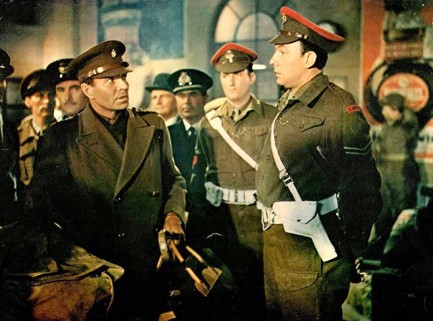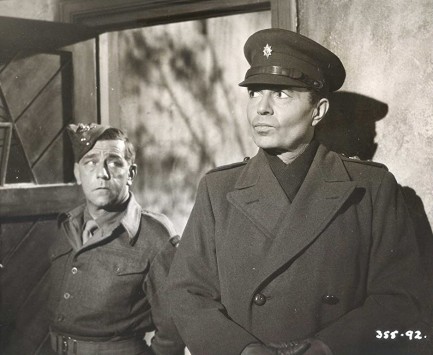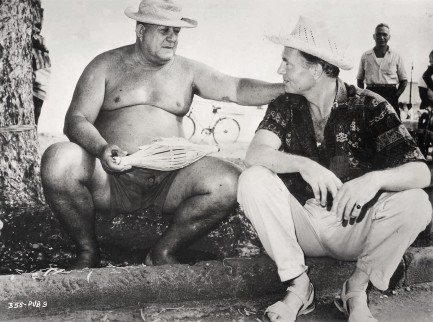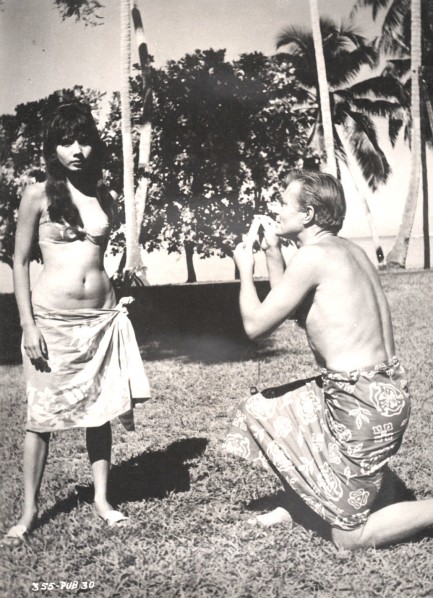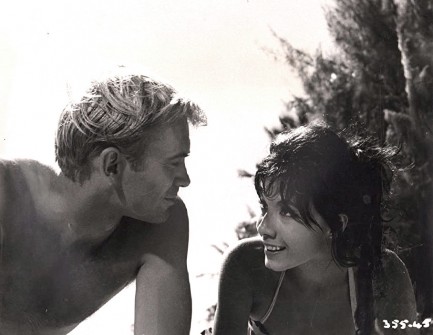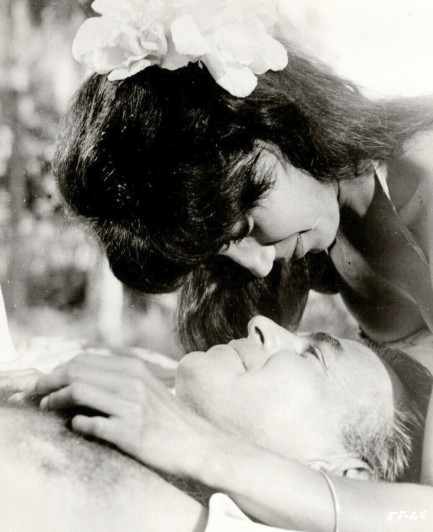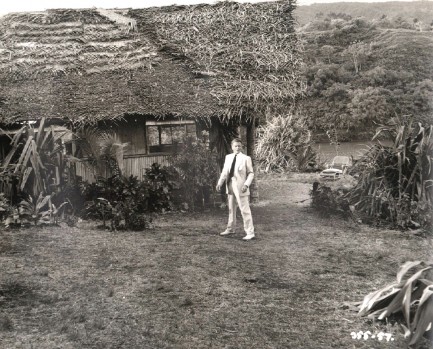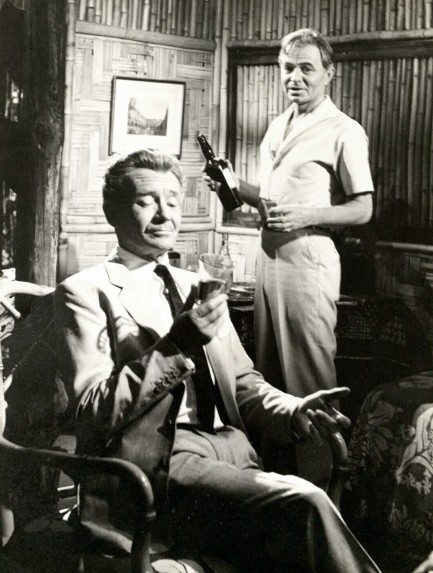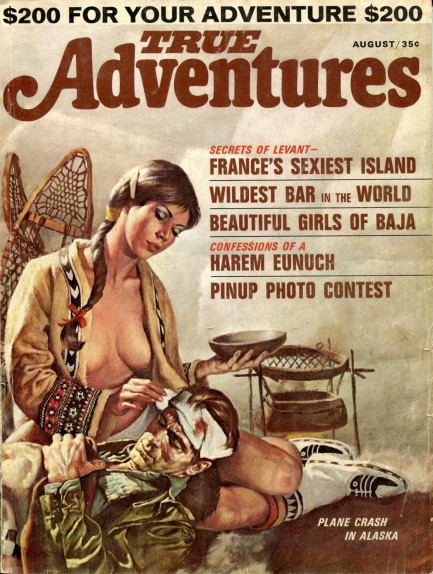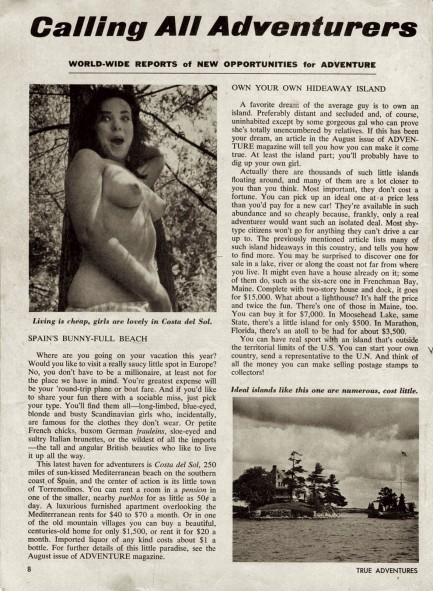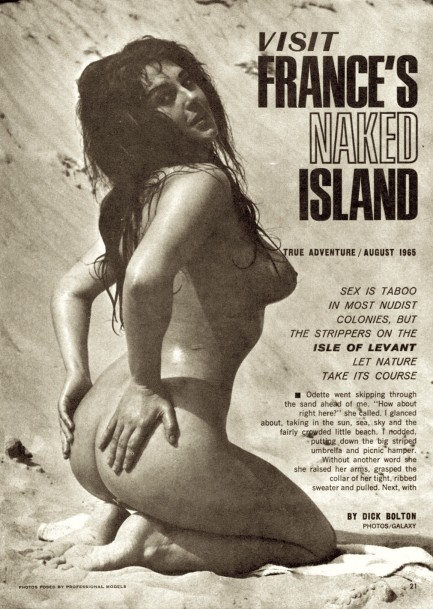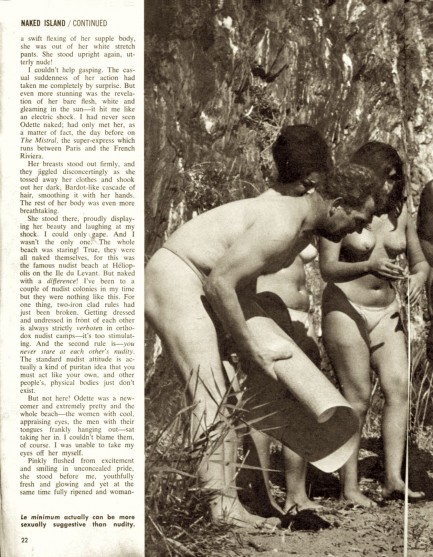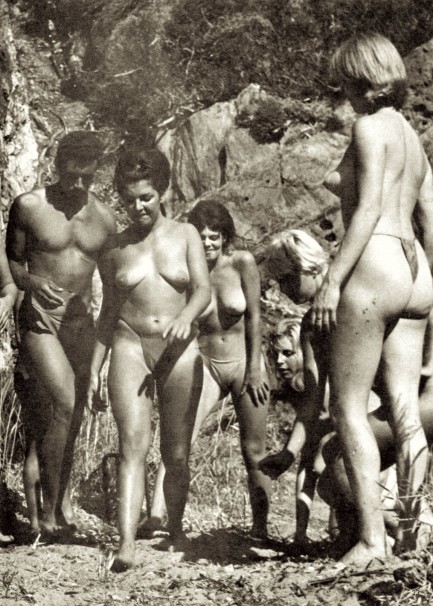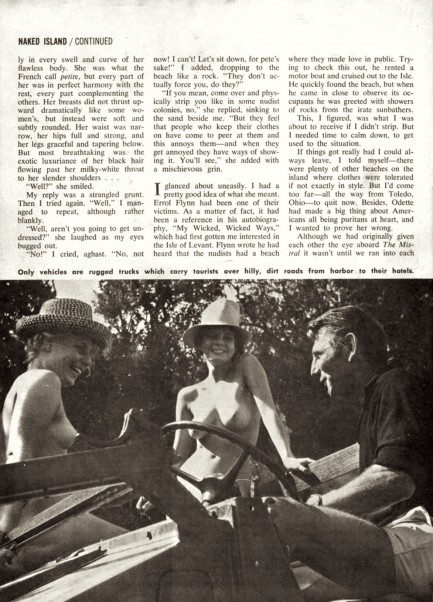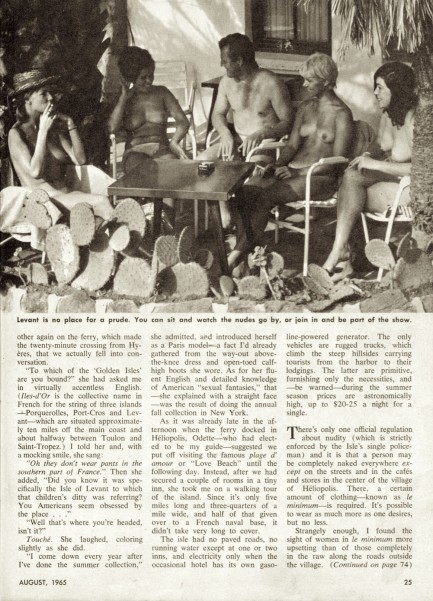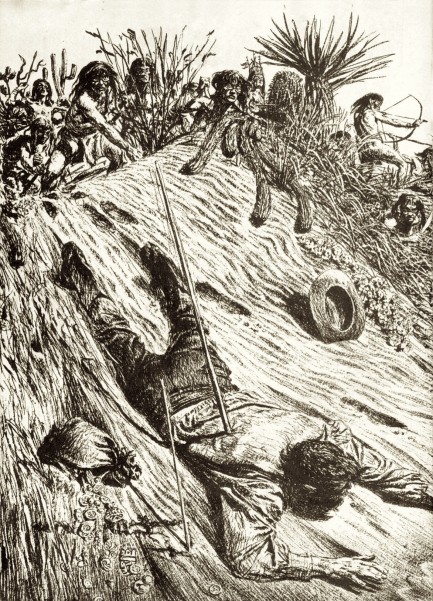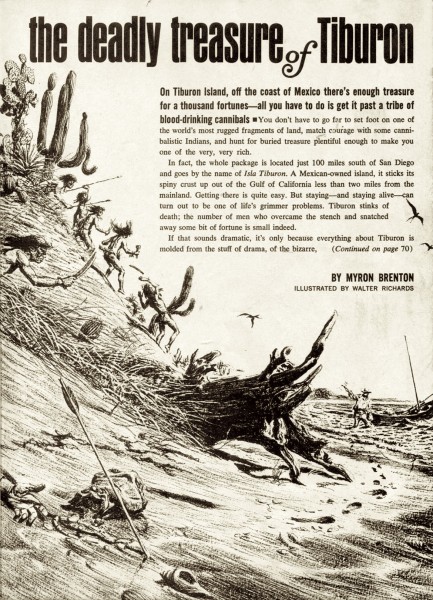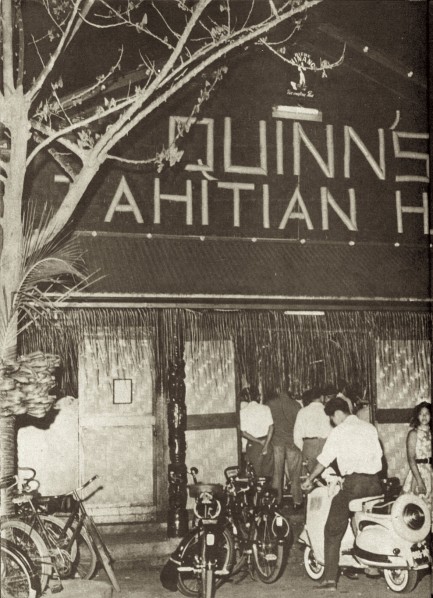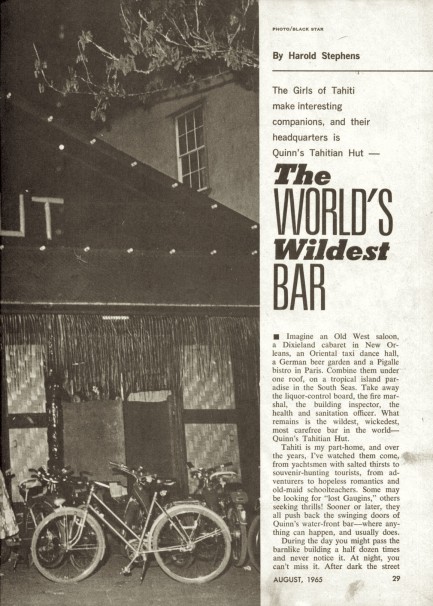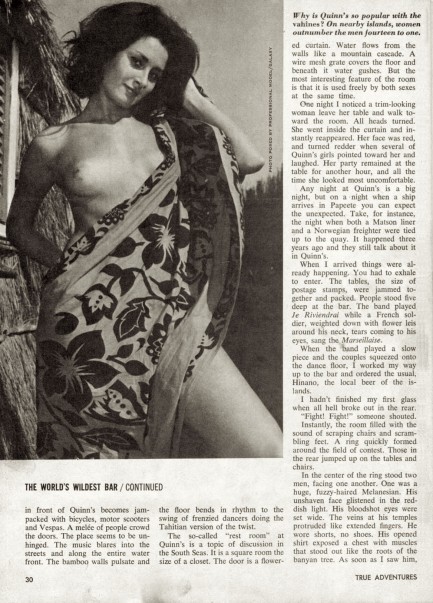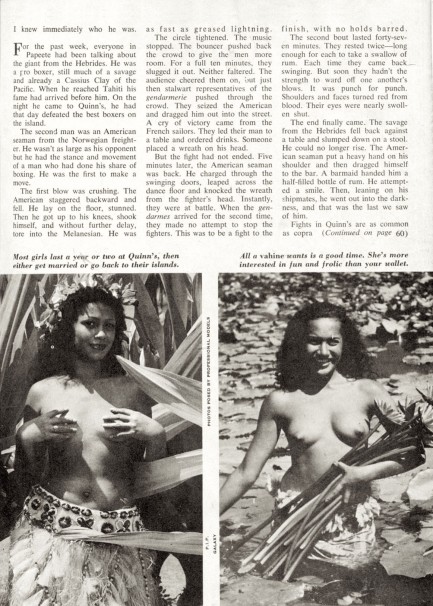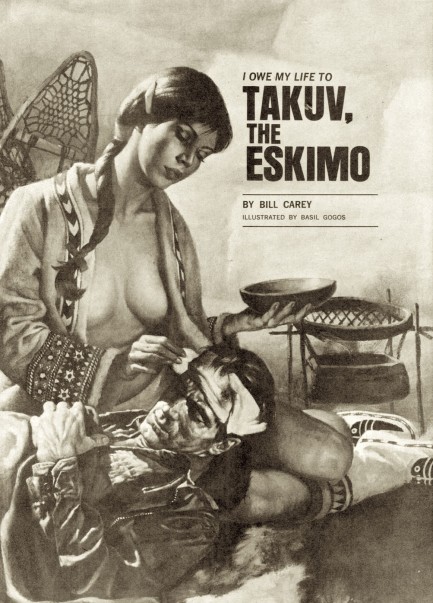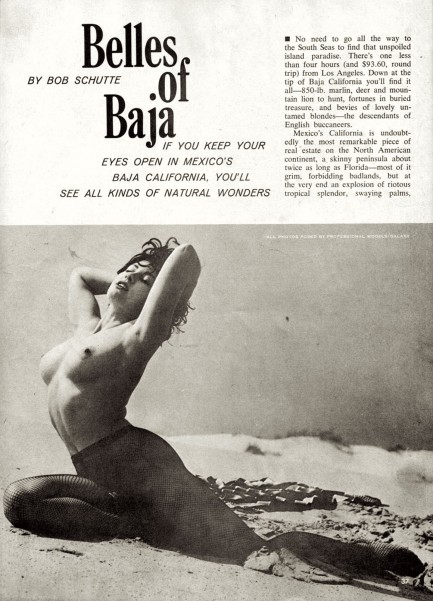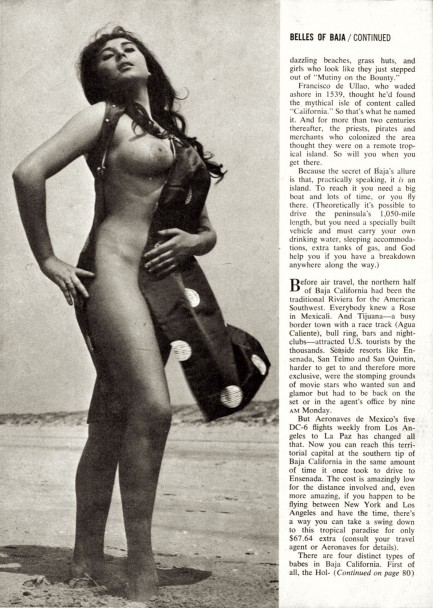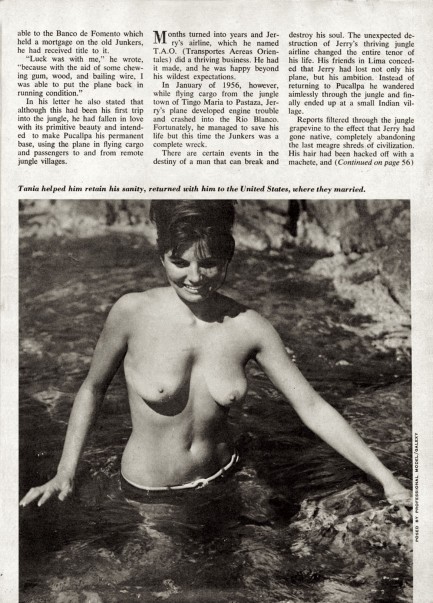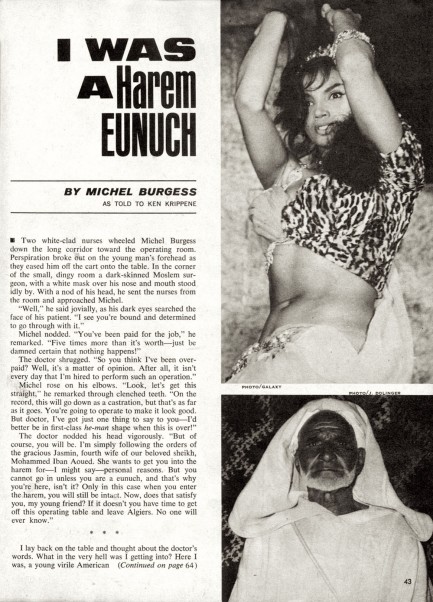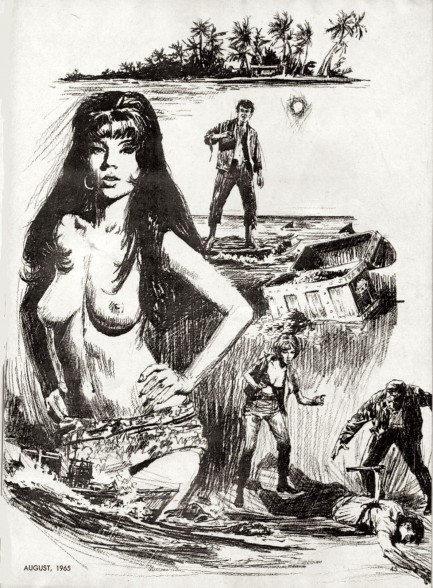 Around the world in 180 pages (or thereabouts). 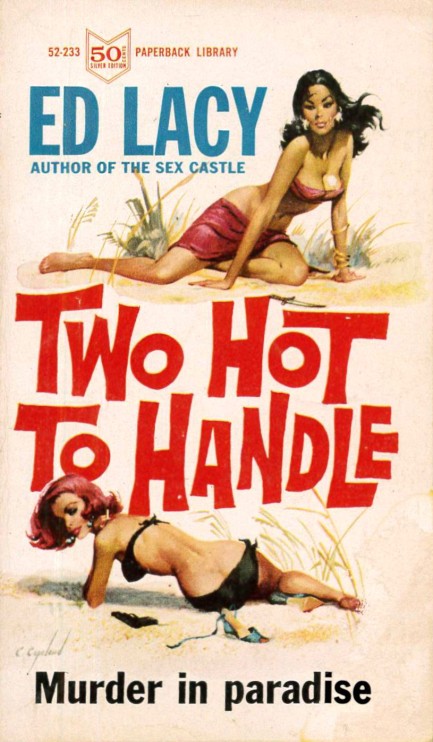
Wouldn't it be great to sail away to an exotic island, live in a hotel, and write novels? Ed Lacy was the archetypal globetrotting author, and 1963's Two Hot To Handle is a product of that lifestyle. It's two novellas joined: “Murder in Paradise,” set in Tahiti, and “The Coin of Adventure,” set on the other side of the planet in Tuscany. “Murder in Paradise” is the tale of an American named Ray Judson and his local wife Ruita, who live reclusively on a small island, and are hired by a Hollywood studio to help scout locations for an adventure movie. Does this idea sound familiar? It should. We guess this sort of thing happened in real life enough to inspire a few novels. Anyway, when the leading lady is murdered the police point the finger at Ruita, and Ray desperately undertakes to find the real killer. We're going to start using the shorthand term “find-the-real-killer novels” to refer to these plotlines. By day Ruita eludes the cops by hiding out on a tiny islet, and by night she ventures ashore to assist her husband and sneak in some moonlit lovin. Avoiding prison is important, but you gotta get your freak on too.
“The Coin of Adventure” is about Kent Kelly, an American adventurer in Viareggio, Italy, who learns that fascists fleeing at the end of World War II abandoned a hoard of stolen gold in a cave. He and a partner head after the loot, but death and betrayal are always uninvited passengers on such missions. Of the two stories we liked “Murder in Paradise” a little better. Lacy, it's clear, strove to correctly portray Tahiti without resorting to travelogue or showy displays of local language. He was interested in the people. To even write a character like Ruita, who decides to work for the moviemakers to ensure that they get the details of her culture correct, shows his empathy for island folk. She's an excellent character—ambitious enough to want to influence how her people are portrayed in Hollywood, naive enough to think she can really do it. With Lacy leading the way we'll go anywhere. Tahiti? Tuscany? You bet.
 Fangs for your service. 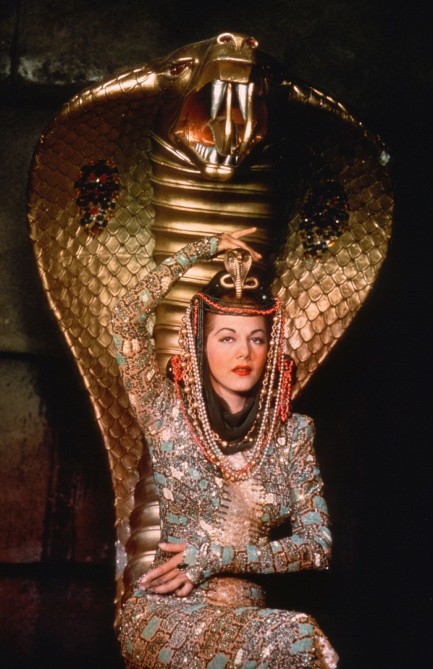
This promo image of Dominican actress Maria Montez in costume for her starring role in 1944's The Cobra Woman sells the movie for us. We'll definitely watch it—and hope it's better than the similarly named 1972 b-horror flick Night of the Cobra Woman. For that matter, we hope it's better than 1955's Cult of the Cobra. Our fingers are crossed. Montez was one of the top actresses in exotic escapist films, appearing in such fare as Ali Baba and the Forty Thieves, South of Tahiti, Moonlight in Hawaii, Sudan, Tangier, White Savage, Pirates of Monterrey, The Thief of Venice... you get the idea. She was still at the top of her globetrotting game when she was found dead in her bathtub in 1951 at age thirty-nine, but her legacy as a film star is assured—even if her movies were shot on Hollywood sound stages, she helped audiences travel the world.
 It was a good thing for its readers Hush-Hush didn't know the meaning of the term. 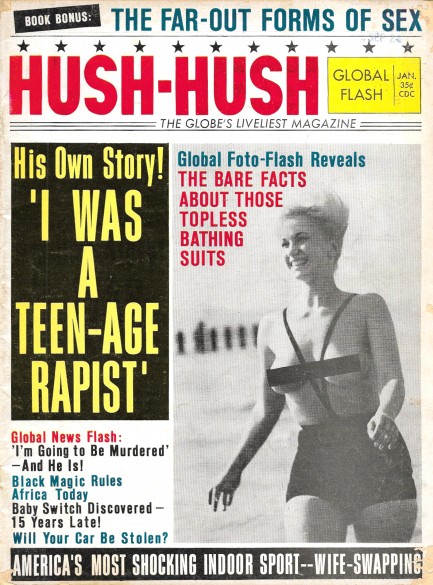
No, we're not going to get into teen-age rapist story that dominates this cover of Hush-Hush published back in January 1965. Though based on a real occurrence, the article is titillation disguised as crime reporting, written during an era when many men thought of rape in one of three ways: vandalization of personal property if the victim was his wife or girlfriend; an attack on the family castle if she was a relative; and she asked for it, which was reserved for most other women. We stress “many men,” not all. From what we gather the majority properly saw it as a heinous attack on the woman. Of course, the vicious nature of it didn't stop it from being widely used as a cinematic and literary device, but that's another discussion, one we've already had and doubtless will again.
Elsewhere on the cover you get photographic proof that topless bathing suits really did exist during the 1960s. There are only a few photos of the things, but Hush-Hush adds to the library of visual confirmation. Now we need proof of the existence of David Dodge's completely backless cache-sexe that made women look nude when viewed from the rear. He says they were worn on the French Riviera during the 1950s, but we have a feeling proof won't be forthcoming anytime soon, absent a time machine and careful coordinates. Lastly, the cover's bottom banner touts wife swapping. How popular was this practice? We can't know. We suggest asking your grandma. But first compliment her cooking: “This casserole is delicious, gram-gram. Did you and paw-paw ever screw other married couples for kicks? Can I have more peas?”
The next article we want to call attention to is, “How Do Tahitian Beauties Drive Men Wild?” Vintage novels that waxed pornographic about the sexual attitudes of Pacific Islanders were almost an official sub-genre, so this story was a must-read for us. And for you too, which can do below. At least mostly. We couldn't upload the entire thing. It's too long, but there's enough to give you the gist. And the gist is simply that Tahitians apparently had no taboos concerning sex, partners, and privacy. The story is framed around alleged trysts with various Hollywood stars, and how Hush-Hush avoided lawsuits from those stars is really a mystery. You'll be entertained. We will say, though, that it's rather unfortunate that the story is couched in insulting terms toward Tahitian women.
As a final note, Hush-Hush used a cheaper printing process and lower quality paper than other publications from the same rank. Those two aspects of the magazine worsened as time passed. By 1965, it was barely a step above the National Informers of the world in terms of technical values. Because of that our scans aren't great. The cheap printing resulted in a scanner moiré pattern on most of the black and white content (though the color came out fine). It's actually fixable in Photoshop or Gimp, so we hear, and we have both programs, but do we want to do all that work for cheap-ass Hush-Hush? We decided we didn't. Therefore, what you see is what you get—twenty-plus scans below.
 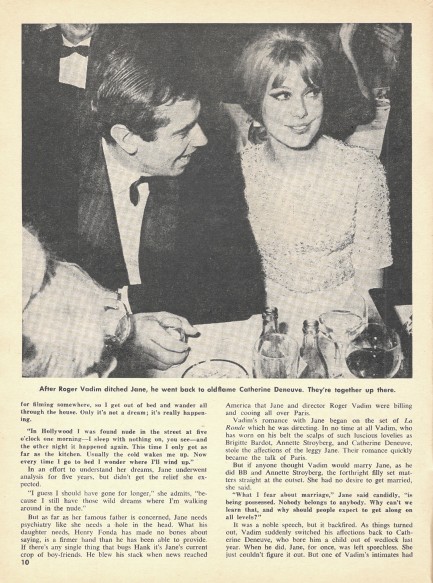 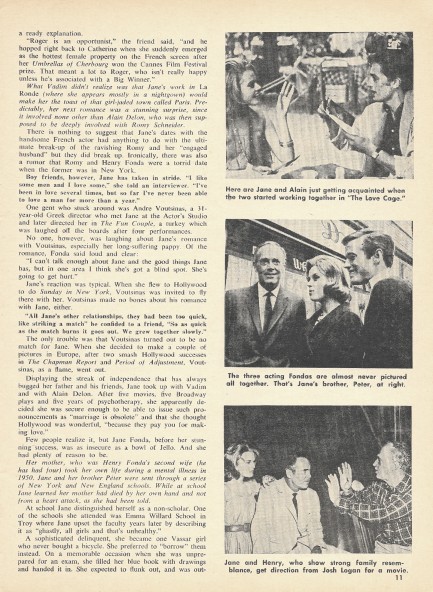 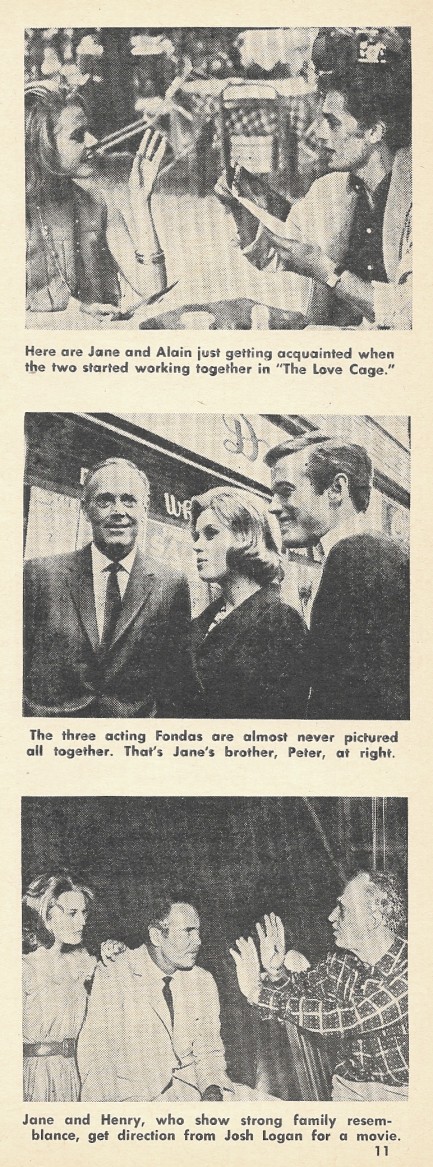 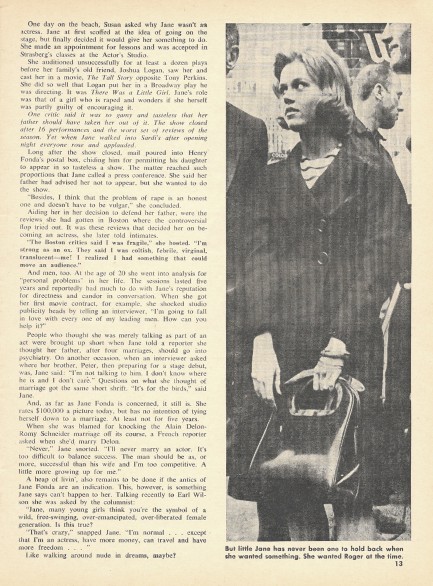 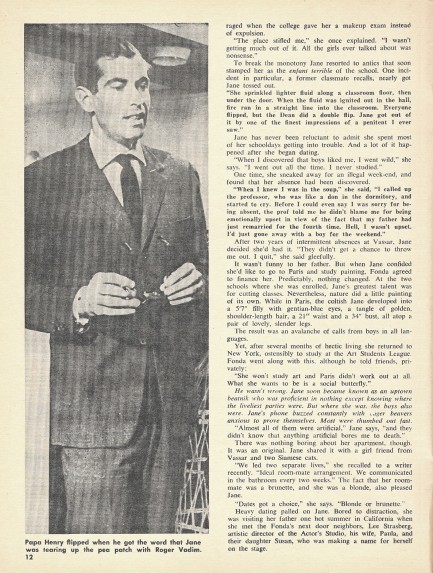 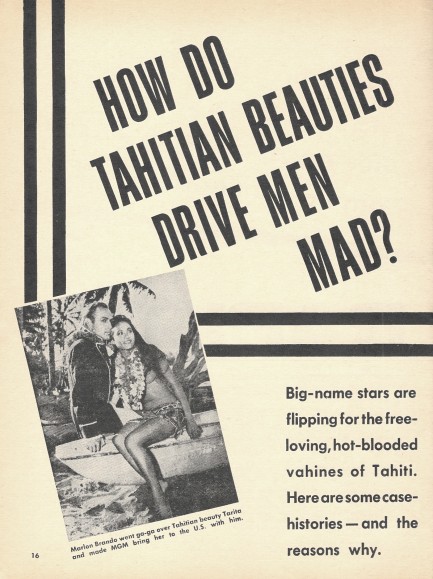 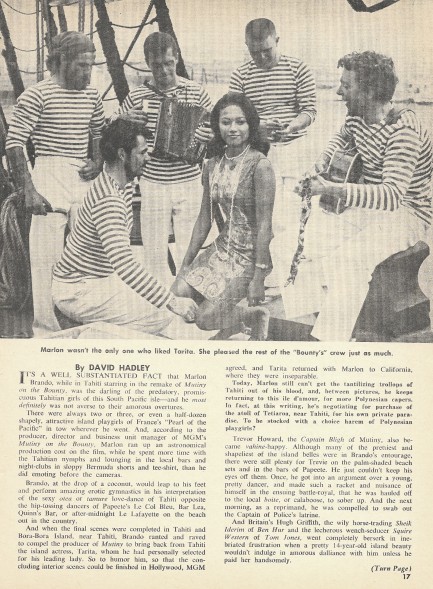   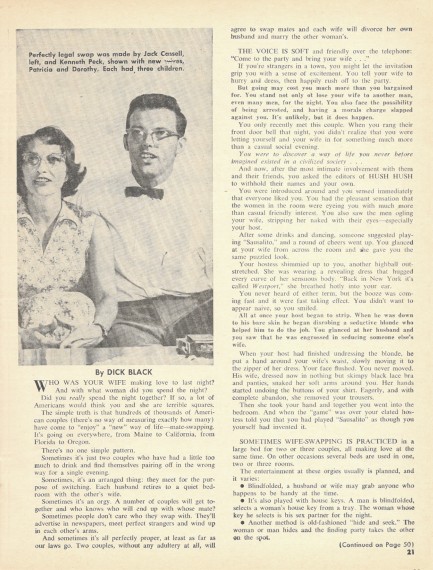 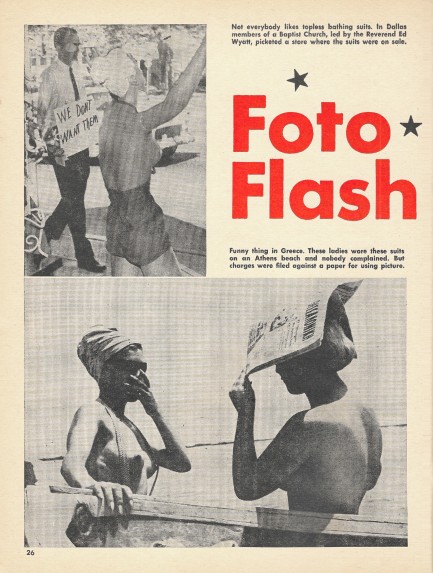 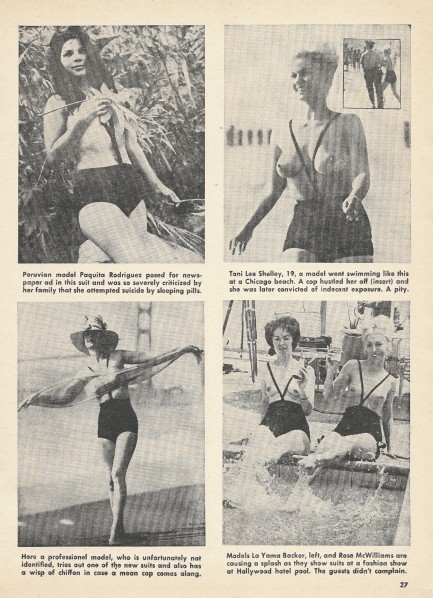 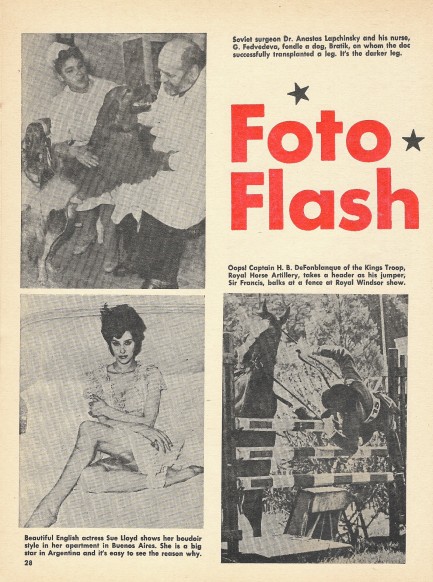 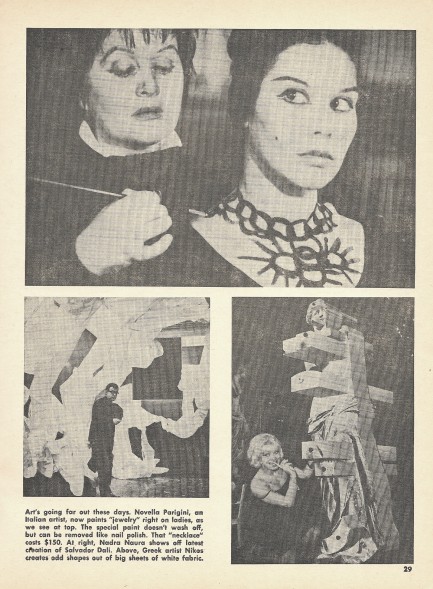 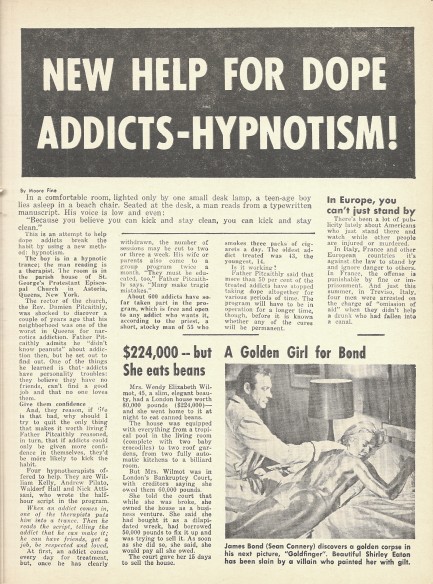 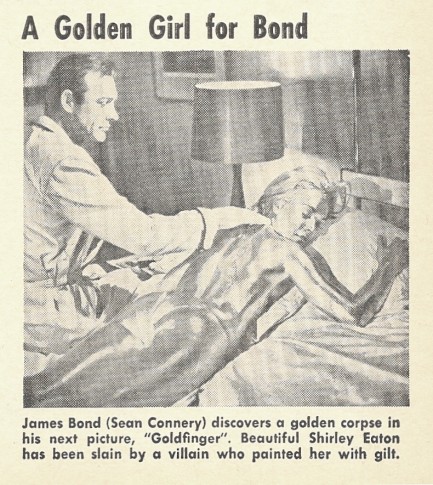 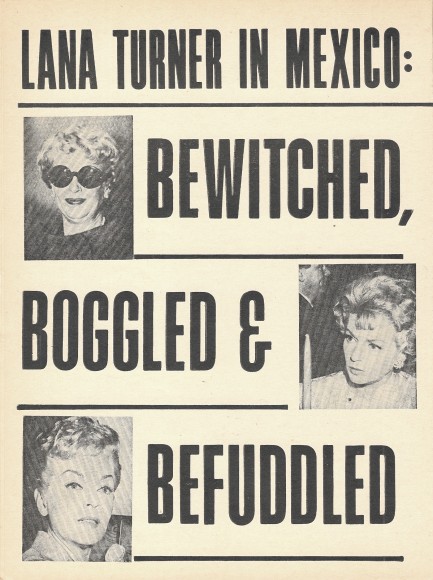 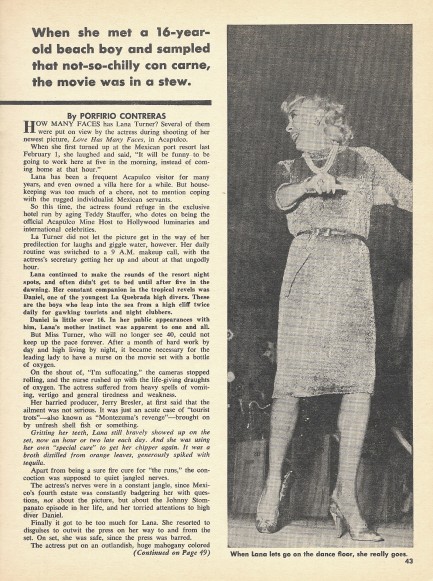 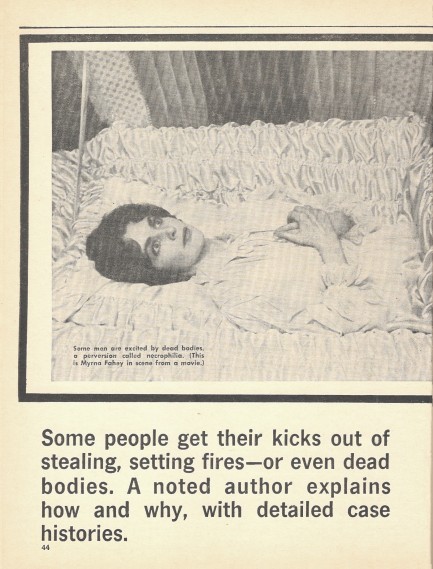 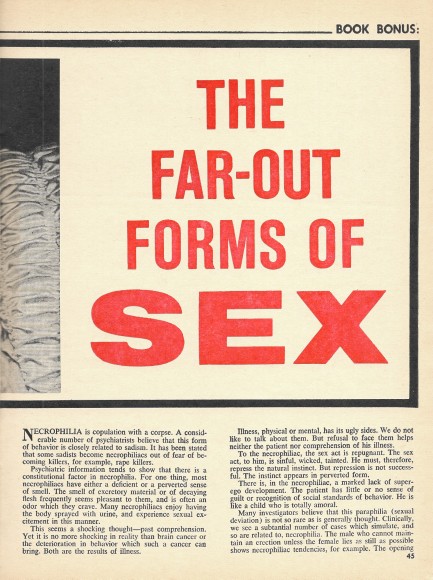 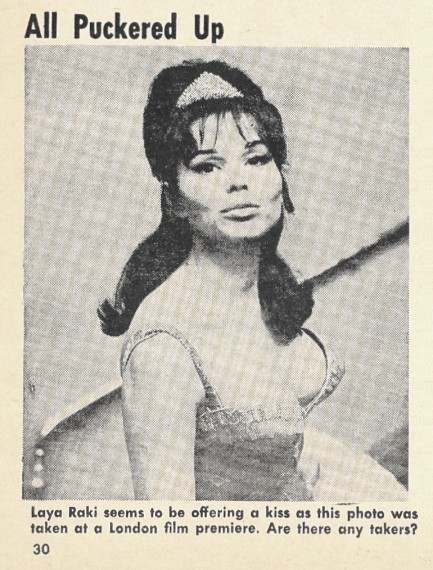 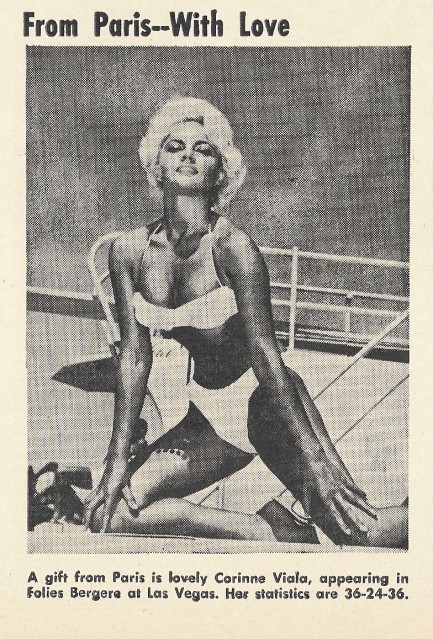
 James Mason's tropical paradise may not be an accurate portrayal, but you can't say it's not fun. 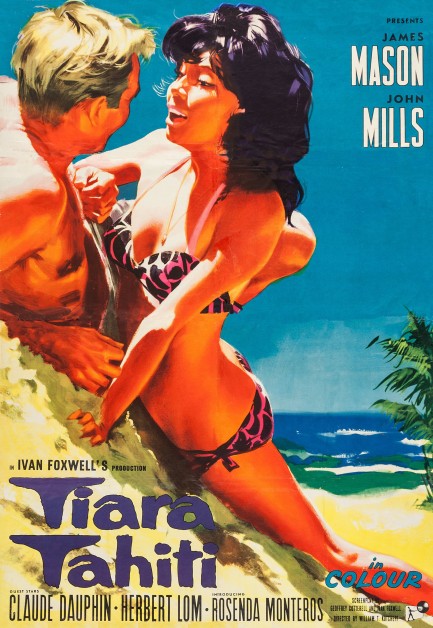
This nice poster was made for the British produced South Seas movie Tiara Tahiti, which opened in the UK today in 1963. There are a few posters but this one is the best, we think, though we had to do some heavy retouching to make it presentable. An alternate promo appears below. The movie is a comedy-drama about former business partners played by James Mason and John Mills, who clashed in England, fought the Germans in World War II, and have both turned up in Tahiti during peacetime. Part of their dislike for each other is due to their opposite personalities. Mills is the uptight sort who wishes to be respected but isn't, while Mason is naturally likeable and happy-go-lucky. One reason for him to be happy is that his girlfriend is Rosenda Monteros. She's supposed to be an island girl, and though she's Mexican in real life rather than Tahitian, she's smoking hot whatever her place of birth.
The movie is based on a novel of the same name by Geoffrey Cotterell, and we're tempted to acquire it. We've gotten pretty good at filling in between the scenes of vintage cinema, and because Monteros is Mason's girlfriend but has flirtatious interactions with other men, we suspect there's an explicitly sexual aspect to the book that was tossed into the screenwriter's garbage bin. We say that because we've read a couple of novels from the mid-century period set in Tahiti, and in both of those local women were portrayed—and we have no way of knowing whether this was true or a white Western fantasy—as readily available. Sex is only hinted at in Tiara Tahiti, but Monteros has a nude scene in a waterfall pool and another topless sequence, and she looks flat-out astonishing in both. We gather these occurred only in the non-U.S. version. Well, try to find that one.
You won't be surprised to learn that there are a few offensive characterizations here, even up to plastering Czech actor Herbert Lom with makeup and prosthetic eyes so he can play a Chinese islander named Chong Sing. There are some who resent this kind of thing being pointed out, but realizing how anachronistic these sorts of elements are isn't different in essence from noting that old vampire movies have bats on strings. It's impossible to look at it and not see it as kind of dumb. There's a better way to do it now, that's all, and that better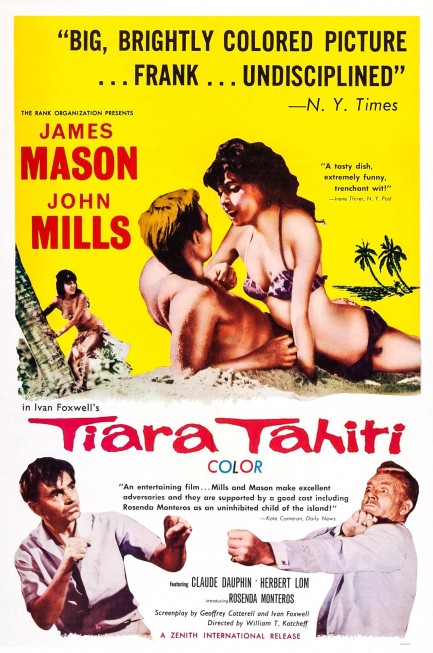 way also offers opportunities in cinema for historically erased groups like the Asian actor who could have played Chong Sing. But movies are still just attempts at entertainment. With notable exceptions like The Birth of a Nation, deliberately harmful portrayals of selected ethnic groups was not a goal. As it happens, Lom is quite good in his role. way also offers opportunities in cinema for historically erased groups like the Asian actor who could have played Chong Sing. But movies are still just attempts at entertainment. With notable exceptions like The Birth of a Nation, deliberately harmful portrayals of selected ethnic groups was not a goal. As it happens, Lom is quite good in his role.
While he and Monteros are important secondary attractions, it's Mason who provides the real reason to watch Tiara Tahiti. He's perfect as the layabout main character—charming, clever, selfish, and always able to improvise when circumstances require it. His old rival Mills is in Tahiti to develop pristine local land for a hotel chain, while Mason is on the opposite side of this paradise-wrecking business deal. He manages to get hired as the project's local expert, but all the while is trying to sabotage the deal from the inside. Of course, Tahiti eventually became dotted with hotels and barely-used millionaire hideaways like everyplace else, and currently is taking steps to reduce mass arrivals from overseas, but within the context of this quaint movie from a lifetime ago, maybe Mason can win. However it turns out, Tiara Tahiti should give you a few smiles.
 It's a tough job but some tabloid has to do it. 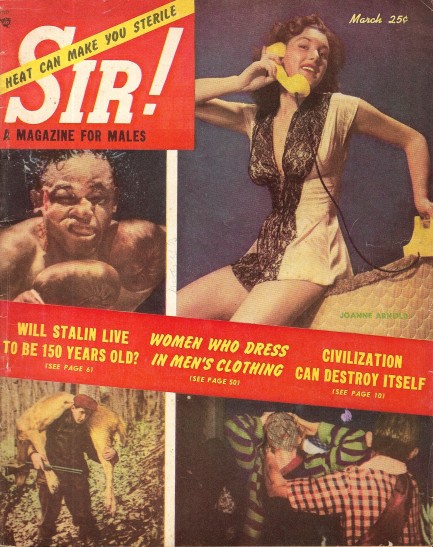
Above is the cover of a March 1953 issue of Sir! magazine, and in an example of the ephemeral nature of such items, shortly after we scanned this we spilled a glass of red wine on it. So behold! It's even more rare than it was when we bought it. Above the slash you see boxer Kid Gavilan, he of the famed bolo punch, and on the right is model Joanne Arnold, who we've featured before here, here, and here. She doesn't appear inside. But what you do get is a jaunt through such exotic locales as Melanesia, Tahiti, and Lisbon in search of knowledge and thrills.
We were drawn to the Lisbon story, which the magazine describes as a capital of sin. To us the word “sin” means late nights, good intoxicants, fun women, and excellent entertainment. To Sir! it means being cheated, robbed, framed, and arrested. To-may-to to-mah-to, we guess. We've spent some time in Lisbon and we love it. We don't know what it was like in 1953, but Europe was still coming out of World War II, which means many countries—even non-combatants like Portugal—were wracked by poverty. So we wouldn't be surprised if thieves were out in droves.
Elsewhere inside Sir! you get art from Jon Laurell and Joseph Szokoli, photos of model Jean Williams and Tahitian beauty queen Malie Haulani, a story on the danger of nuclear weapons, anthropological snobbery in exposés about New Caledonia and the Kogi people of Colombia, and fanciful theories about Russian scientists working to keep Josef Stalin alive for 150 years—which didn't work, because he died a mere five days after this issue of Sir! hit the newsstands. Clearly, the magazine is cursed. It certainly cursed our wine glass. We have thirty-five scans below for your enjoyment and other issues of Sir! here and here.
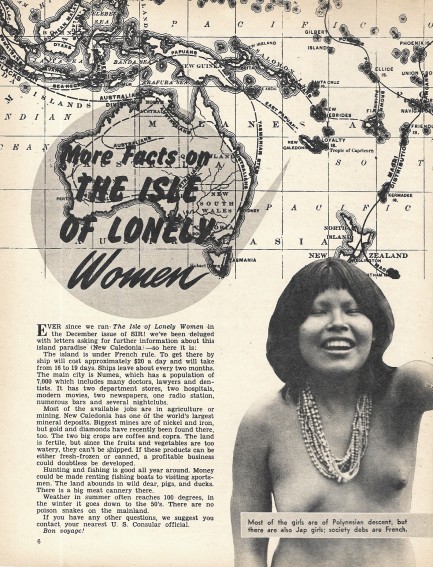    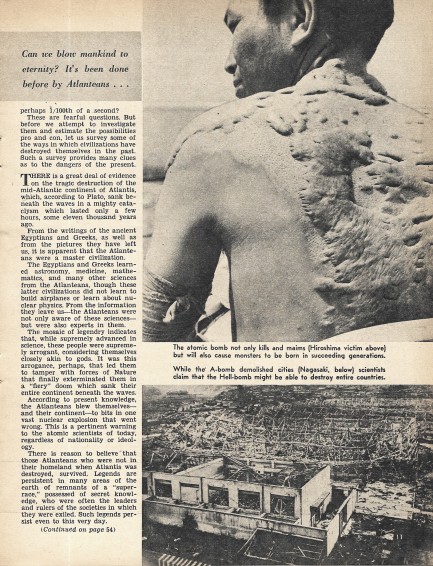 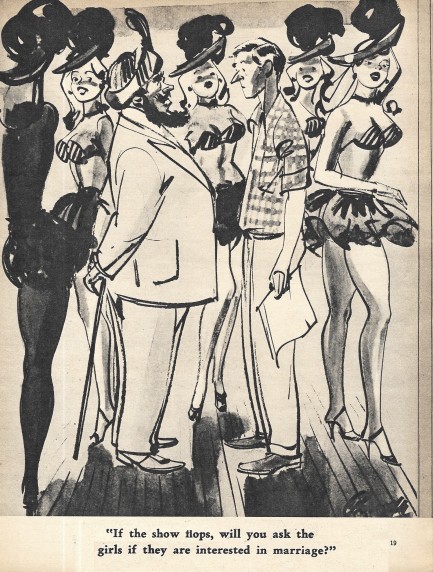 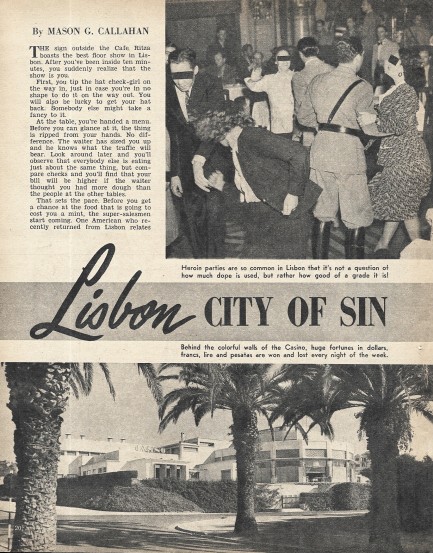 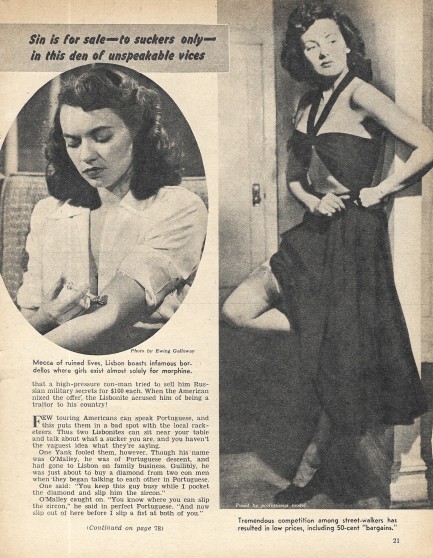 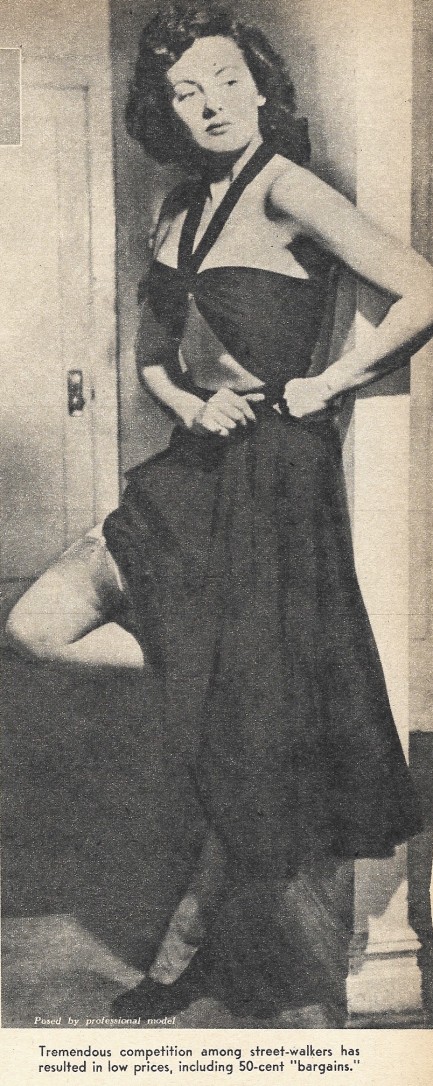 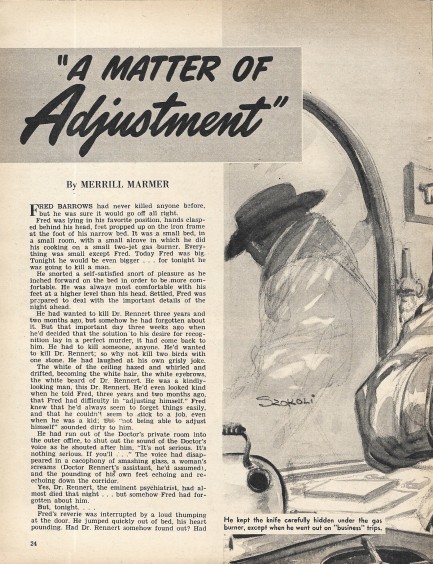 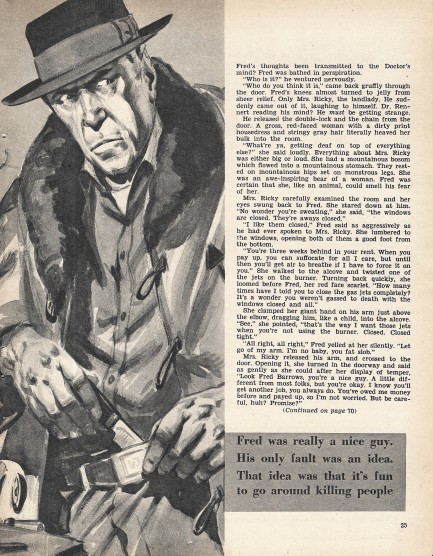  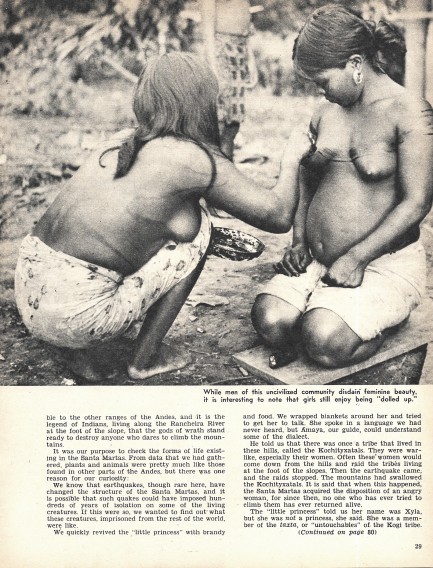 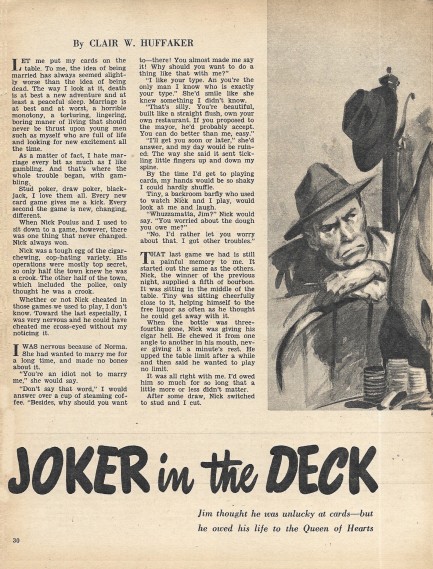 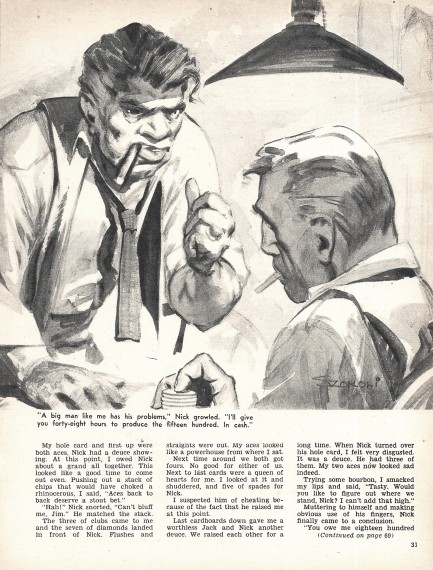 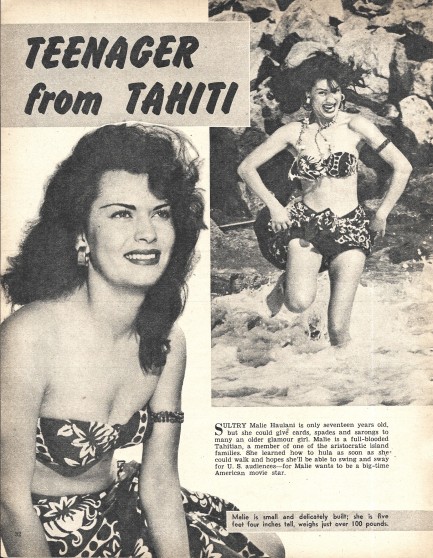 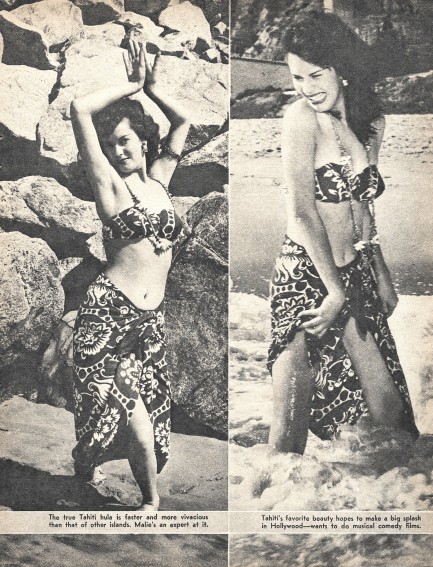 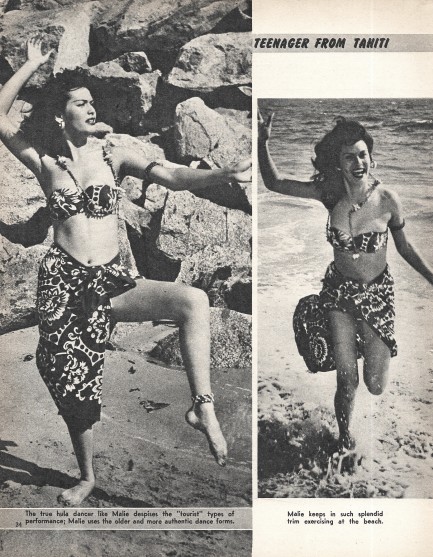 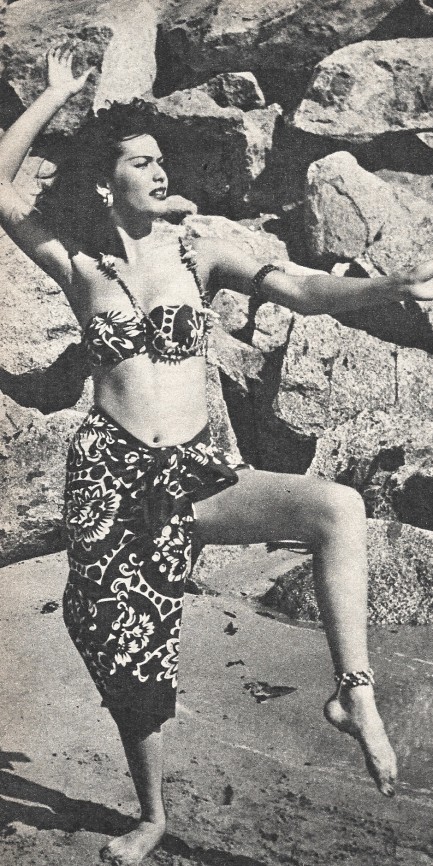 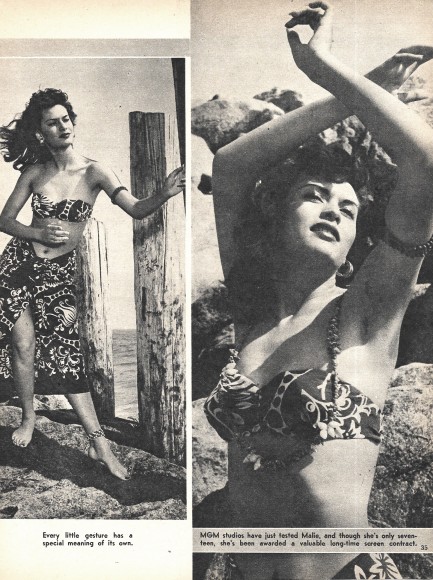 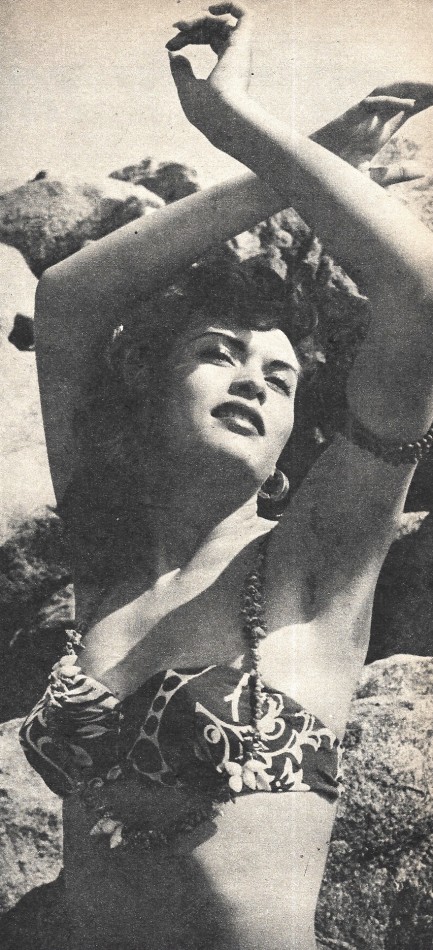 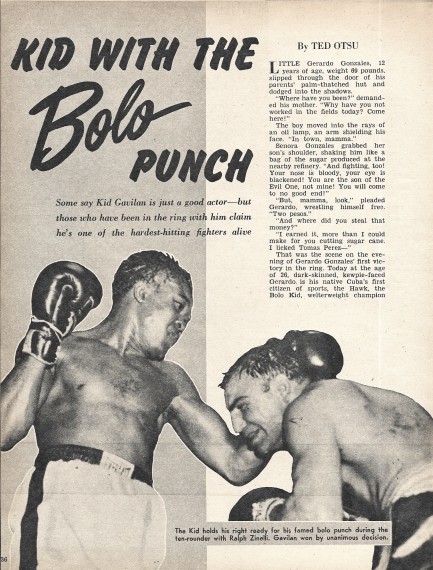 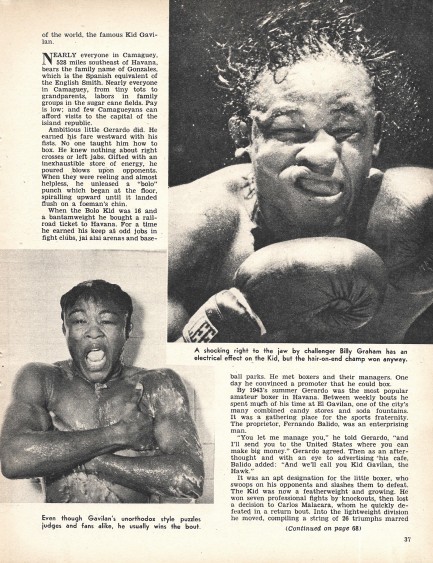  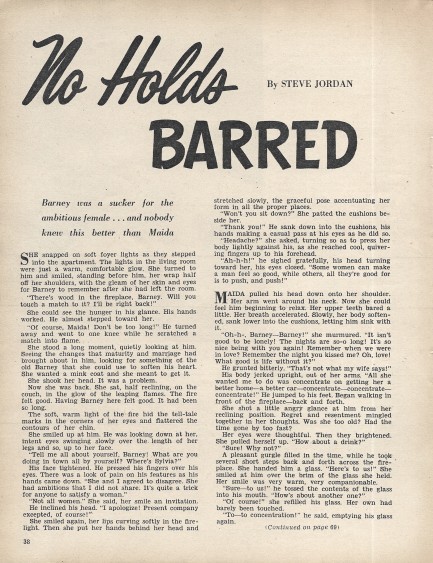 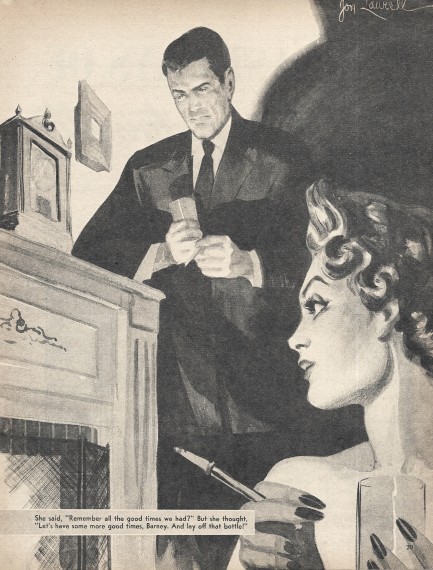 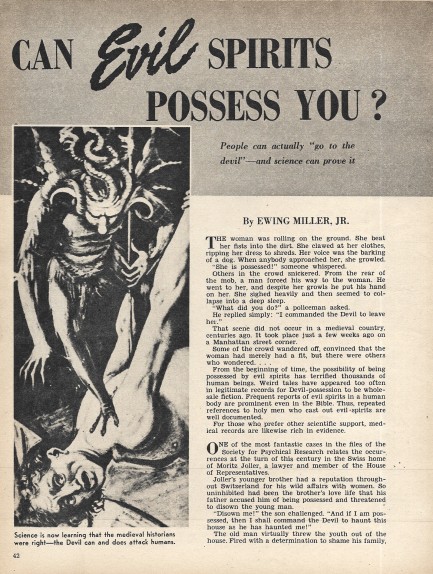 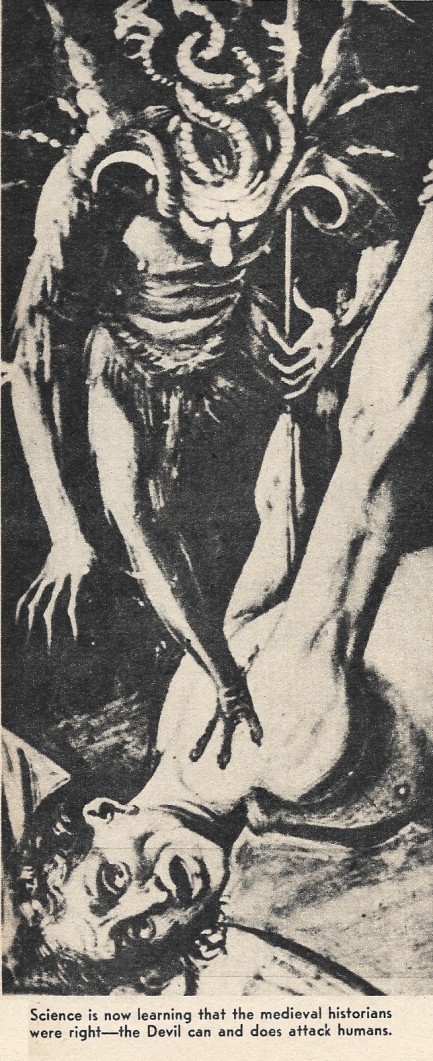 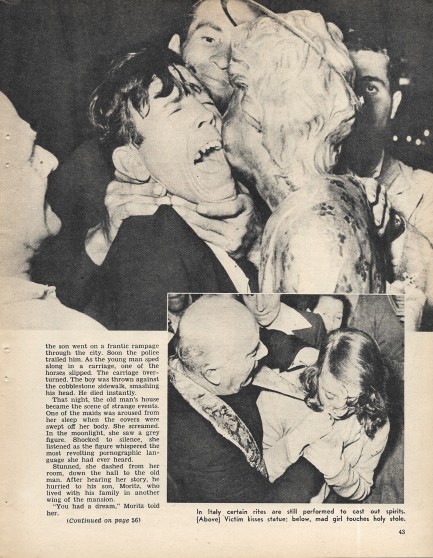 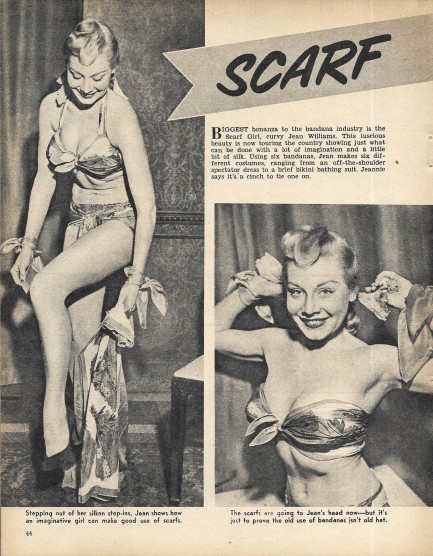 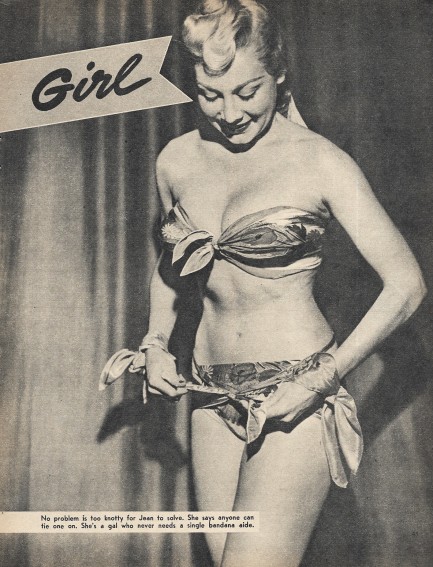 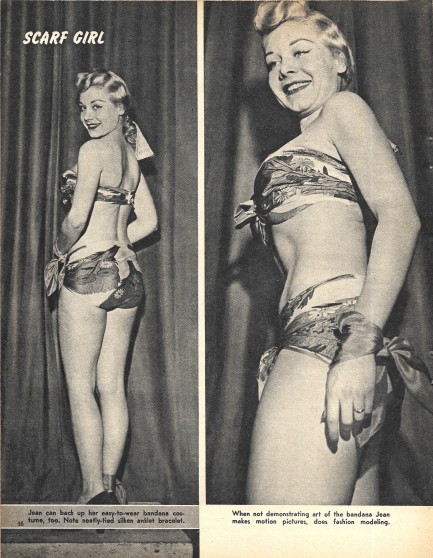 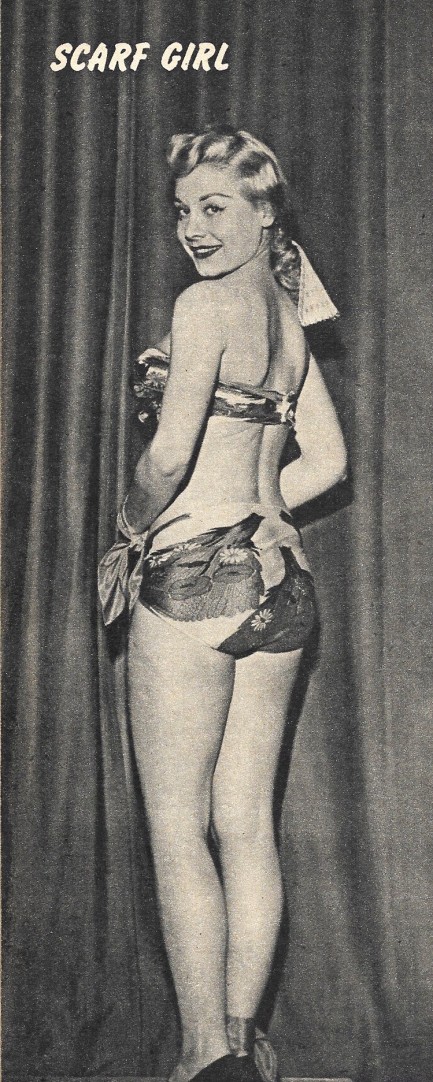 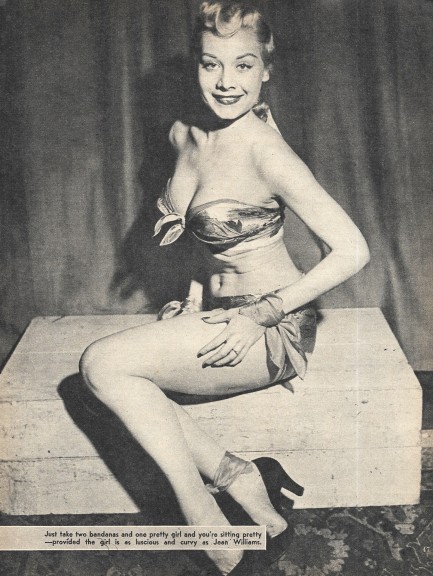 
 Monteros gives a boost to Tahitian tourism. 
The glowing figure you see above is Mexican actress Rosenda Monteros, who appeared in such films as The White Orchid and The Magnificent Seven, and is seen here in a production photo made for the 1962 movie Tiara Tahiti. This really is a beautiful image. Since the movie was actually was filmed mainly in Tahiti, rather than in, like, Long Beach, this shot was doubtless made on the island. A cinema is the closest most people will ever get to that legendary Pacific paradise, but we bet Monteros made plenty of people want to go. We have another nice shot of her below. 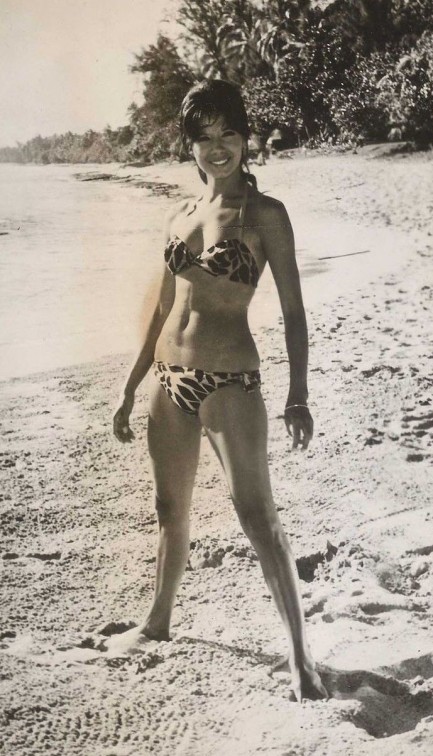
 Avon turns over a new Leaf for a Maugham classic. 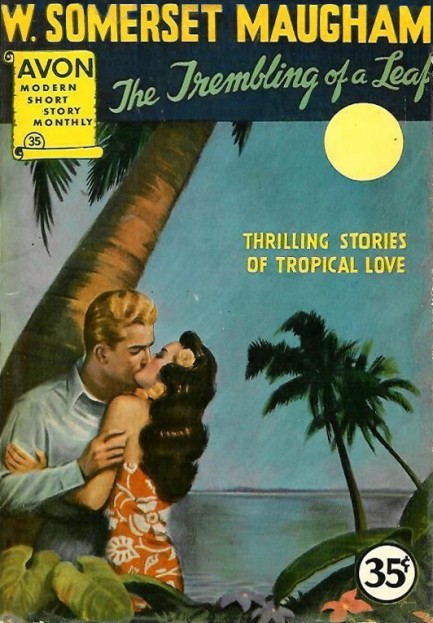
Above, pulp art treatment for W. Somerset Maugham by Avon Books for its Modern Short Story Monthly line. The Trembling of a Leaf was a collection of six tales set in Samoa, Tahiti and Hawaii, and dealing the essential incompatibility of colonial Europeans to island life, and a bit about the nature of travel, something Maugham would return to for his immortal novel The Razor’s Edge. It was originally published in 1921 with a more conservative cover, and Avon produced this sexed-up edition in 1946.
 Tourist board taps gringa to lure gringos across the border.  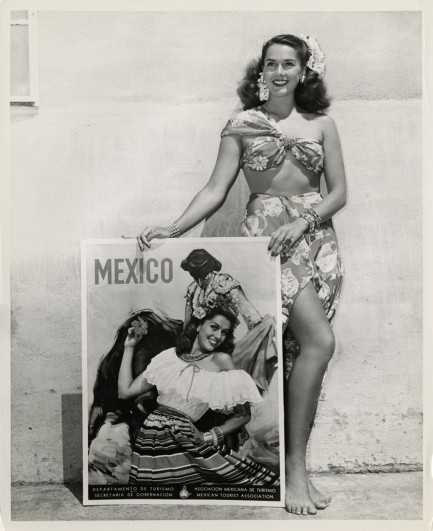
The above photos of American actress Jinx Falkenberg show her posing in costume for her film Tahiti Nights, and she’s holding a Mexican tourist poster for which she had modeled around the same time. This isn’t as a much of a mismatch as you might think. Falkenberg was actually born Eugenia Lincoln Falkenberg in Barcelona, Spain. Being Spanish-born (her parents were American) is of course not remotely the same as being Mexican, but it’s worth mentioning. The truth is she was probably chosen for the poster simply because she was the most famous young Hollywood star associated with Mexico in the consciousness of the American public. She spoke Spanish, of course, and had gotten her start in Spanish films like El carnaval del Diablo, but we doubt average Americans had a clue about that at the time. But once she reached Hollywood she continued to act in films with ethnic themes. For instance, in 1943 she starred in Two Señoritas from Chicago, in 1944 she played an islander in the aforementioned Tahiti Nights, and the next year she played a Mexican girl in The Gay Señorita. So when you add together her birthplace, language skills, and movie roles, she isn’t just some random gabacha the tourist board dug up. While it’s possible it might have been more authentic to use Delores del Rio or Lupe Velez, both of them were much older than Falkenberg, and in any case, maybe they were asked and said no. Below you’ll notice that we managed to find that travel poster, and whatever the reasoning behind its creation, it sure came out looking good. The photos date from 1944, and the poster was used for the years 1944 and 1945. 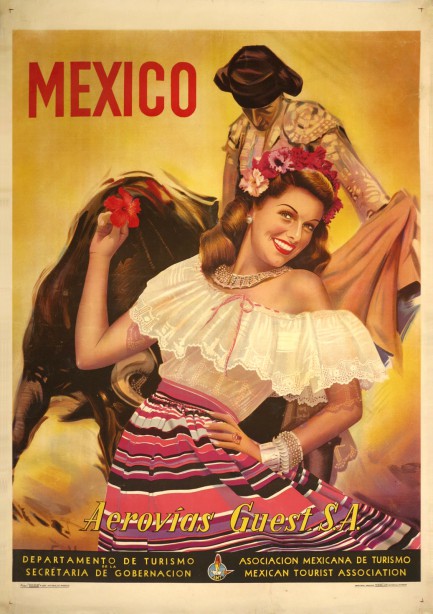
 That's intimation, not imitation. Now guess what I'm intimating. 
American actress and model Edy Williams, who featured in such amusingly titled films as I Sailed to Tahiti with an All Girl Crew, Beyond the Valley of the Dolls, Rented Lips and Dr. Minx, seen here circa 1972.

|
 |

The headlines that mattered yesteryear.
2003—Hope Dies
Film legend Bob Hope dies of pneumonia two months after celebrating his 100th birthday. 1945—Churchill Given the Sack
In spite of admiring Winston Churchill as a great wartime leader, Britons elect
Clement Attlee the nation's new prime minister in a sweeping victory for the Labour Party over the Conservatives. 1952—Evita Peron Dies
Eva Duarte de Peron, aka Evita, wife of the president of the Argentine Republic, dies from cancer at age 33. Evita had brought the working classes into a position of political power never witnessed before, but was hated by the nation's powerful military class. She is lain to rest in Milan, Italy in a secret grave under a nun's name, but is eventually returned to Argentina for reburial beside her husband in 1974. 1943—Mussolini Calls It Quits
Italian dictator Benito Mussolini steps down as head of the armed forces and the government. It soon becomes clear that Il Duce did not relinquish power voluntarily, but was forced to resign after former Fascist colleagues turned against him. He is later installed by Germany as leader of the Italian Social Republic in the north of the country, but is killed by partisans in 1945.
|

|
|

It's easy. We have an uploader that makes it a snap. Use it to submit your art, text, header, and subhead. Your post can be funny, serious, or anything in between, as long as it's vintage pulp. You'll get a byline and experience the fleeting pride of free authorship. We'll edit your post for typos, but the rest is up to you. Click here to give us your best shot.

|
|































 way also offers opportunities in cinema for historically erased groups like the Asian actor who could have played Chong Sing. But movies are still just attempts at entertainment. With notable exceptions like The Birth of a Nation, deliberately harmful portrayals of selected ethnic groups was not a goal. As it happens, Lom is quite good in his role.
way also offers opportunities in cinema for historically erased groups like the Asian actor who could have played Chong Sing. But movies are still just attempts at entertainment. With notable exceptions like The Birth of a Nation, deliberately harmful portrayals of selected ethnic groups was not a goal. As it happens, Lom is quite good in his role.